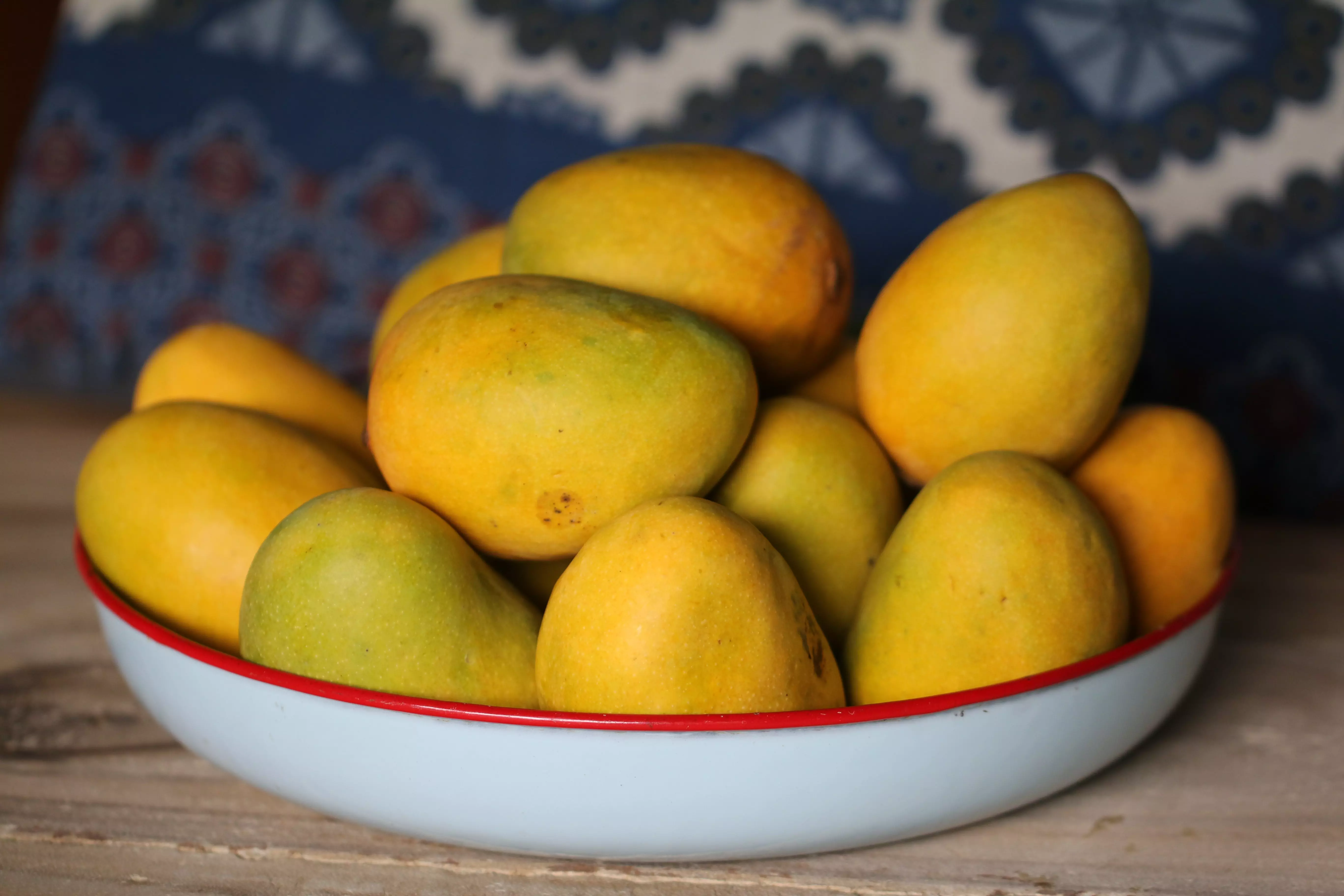All the buzz on India's beloved mangoes!
Get ready to go on a fruity journey and discover what makes mangoes the ultimate "baap" of all fruits
- By Aayushi VichareLoading...
- | 18 March 2023 10:00 AM IST
 X
X
Mango is truly the king of fruits, and there's no denying that it is one of the most popular fruits in India. Mangoes are and integral part of Indian culture and honestly, summers here are incomplete without the scent of ripe mangoes wafting through the air as you bite into them. Mangoes come in all kinds of varieties, from the juicy alphonso to Gujarat's famous kesar, each of them having its own unique flavor and texture.
When it comes to the fruit, everyone has their own particular way of enjoying it. Some prefer to simply bite into a ripe mango making a slight mess as you devour it, while others prefer to cut the fruit into small cubes and eat it in a mess-free manner. There are also those who love to add mango to their drinks and desserts, such as mango lassi, mango ice cream, and mango pudding and so much more, while others simply love to eat it as is.
India's love for mangoes is no secret, and it's also no surprise that our country is the world's largest producer of the fruit and its cultivars as well, accounting for about 40% of the world's mango production, with over a 1000 varieties grown in India. Mangoes have been cultivated in India for over 4000 years and are mentioned in ancient Sanskrit texts, highlighting the fruit's rich history in the country. The alphonso mango, which is considered one of the best-tasting varieties, is primarily grown in the western state of Maharashtra. India also exports mangoes to countries all over the world, including the United States, Europe, and the Middle East.
There is more to this fruit and we will tell you more about it, right from how to choose the right mango to the best 5 types of it.
How to choose the right mango:
Choosing the right mango is essential to get the best flavor and texture out of the fruit. Here are some tips on how to choose the right mango:
1. Size, shape, and colour: Mangoes come in a variety of sizes, shapes, and colors, depending on the variety. However these attributes do not necessarily indicate its ripeness or sweetness. Instead, look for a mango that is plump, full, and free of any bruises or blemishes. The skin should be smooth and without any cracks, and the color should be vibrant and consistent.
2. Scent: A ripe mango should have a sweet and fruity aroma at the stem end. If the mango has no scent, it may not be ripe yet, or it may be overripe.
3. Firmness: The firmness of a mango is an indicator of its ripeness. A ripe mango should yield slightly when pressed gently, but it should not be too soft or mushy.
When it comes to buying mangoes, you can choose to buy them either raw or ripe from the market. If you plan to consume them immediately, it's best to buy ripe mangoes and just dig in. However, if your pattern of consumption spreads over a longer term, its smarter to buy them when they are still slightly raw and let them ripen at home. To ripen mangoes at home, place them in a paper bag and leave them at room temperature for a few days until they smell sweet and turn into a nice vibrant colour as opposed to the initial slightly green shade. You can also speed up the ripening process by placing them in a brown paper bag along with an apple or banana, which releases ethylene, a gas that helps ripen the mangoes faster.
Nutrient content in Mangoes:
Mangoes are not only delicious but also packed with several essential nutrients that offer numerous health benefits. Here are some of the nutritional properties of mangoes:
1. Vitamins and Minerals: Mangoes are a rich source of vitamins and minerals, including vitamins A and C, folate, potassium, and magnesium. A cup of sliced mangoes provides about 100% of the daily recommended intake of vitamin C, which helps boost the immune system and protection against diseases.
2. Fiber: Mangoes are an excellent source of dietary fiber, which promotes good digestive health and can help reduce the risk of certain chronic diseases such as heart ailments, diabetes, and cancer.
3. Antioxidants: Mangoes are loaded with antioxidants such as beta-carotene (also pigment found in the fruit that lends it its colour), which helps protect against cell damage caused by free radicals, and other compounds like quercetin (also a pigment) and mangiferin (a bioactive compound) that possess anti-inflammatory properties.
4. Low in calories: Despite being sweet and juicy, mangoes are relatively low in calories, with only about 100 calories per cup. This makes them an excellent choice for snacking for those looking to maintain a healthy weight.
5. Boosts eye health: Mangoes contain high levels of beta-carotene, which is converted to vitamin A in the body. Vitamin A is essential for maintaining healthy eyesight and preventing age-related macular degeneration.
Best 5 of India
India is known for its diverse and delicious varieties of mangoes. Here are the five best varieties of mangoes available in India:
1. Alphonso Mangoes: One of the most famous and sought-after mango varieties in India is the alphonso, also known as the King of Mangoes. Alphonso mangoes are primarily grown in the Konkan region of Maharashtra and are prized for their rich, creamy, and buttery flavour, as well as their soft, juicy texture. They have a distinct aroma that is described as a blend of honey and apricot and are one of the most expensive mango varieties in the world.
2. Kesar: Another popular cultivar is kesar, also known as the Queen of Mangoes, which is grown in the state of Gujarat. They have a sweet, rich, and fruity flavour with a hint of tanginess and a juicy, fiber-less texture. They are known for their golden saffron-coloured flesh and are often used to make desserts like mango kulfi and mango lassi.
3. Langra: The langra variety is native to the northern state of Uttar Pradesh. It has a greenish-yellow skin with a sweet, tart flavour and a juicy, fiber-less flesh. Langra mangoes are often eaten with the skin, which is thin and edible, and are considered the best for including in your mango shakes and smoothies.
4. Totapuri: The totapuri mango, also known as the Karnataka totapuri, is grown in the southern states of Andhra Pradesh and Karnataka. It has an elongated shape with a distinct beak-like tip and has a tangy, acidic taste. Totapuri mangoes are often used to make chutneys, pickles, and juices. They are also a popular ingredient in many South Indian dishes.
5. Dasheri: Lastly, the dasheri cultivar grown in the northern state of Uttar Pradesh, is popular for its rich, aromatic flavour and soft, juicy texture. It has a thin skin that is easy to peel and is often used to make desserts like mango kulfi and mango ice cream.
This mango season, get ready to indulge in some sweet, juicy goodness and have a fruity blast! Hope this information helps you up your mango game and choose the perfect ones for your next mango party.
Have an aam-azing summer!

Aayushi Vichare
Aayushi is that friend who won’t let you take a bite without capturing it. For her, the easiest but still thoughtful way of making someone feel special is by cooking or getting them their favourite food. Currently, she’s on an expedition to integrate all her favourites: food, social media and marketing, so that you don't miss the hottest spot in town and you know where to eat those crispy and juicy chicken wings.


